
Melbourne's Alfred Health has gone to the market to look for a single sign-on solution as part of its electronic Timely Quality Care (eTQC) project, which will see it invest in a significant uplift of its Cerner electronic medical record and better support the use of clinical applications at the point of care.
Alfred Health says the eTQC program represents the largest technology investment undertaken by the organisation, which has used a version of Cerner's clinical information system since 1999. As part of its strategic plan, it has committed to the implementation of a full enterprise-wide EMR supported by real-time data capture and to achieve HIMSS Level 6 certification by 2020.

HL7 New Zealand has signed a memorandum of understanding with vendor group NZ Health IT to work together on promoting interoperability in the NZ health sector.
NZHIT has created what it calls a “vision and charter for interoperability”, which it says is designed to provide direction on working collaboratively to build a fully interoperable ICT environment.

The federal Department of Health says the renewal of the cervical screening program and the accompanying roll-out of the National Cancer Screening Register (NCSR) are on track for the revised commencement date of December 1, denying claims that the register won't be ready in time.
Pulse+IT sources say an essential element of the register – the ability to send medical histories to cervical screening labs – will not be ready in the first phase, and data from the existing state and territory registers will also not be fully migrated.
However, a spokeswoman for the department said the cervical renewal and the NCSR will commence on December 1, with MBS claim items and fees to support the new testing regime also in place.

Online appointment booking and directory service HealthEngine has released a new medication management service embedded within the HealthEngine app, which will allow patients to monitor their medications and be prompted to book an appointment with their GP for a repeat script.
Called Medication Manager, the opt-in service allows patients to get reminders when to take their prescribed doses and share information on their reactions to the medications with their GP, and practices will be able to synchronise with the app so prescriptions will be automatically added.

The independent review panel set up to look into healthcare provider access to Medicare card numbers following reports of the sale of numbers on the “dark web” have recommended a move from current systems of authentication for the Department of Human Services' Health Professional Online Services (HPOS) system.
The panel has also recommended a limit on the quantity allowed in batch requests for Medicare numbers and the phasing out of telephone channels for provider organisations to access or confirm their patients' numbers.

Pulse+IT's weekly round-up of international health IT and eHealth news for the week ending October 15:
ONC challenges industry to build secure FHIR servers
Health Data Management ~ Greg Slabodkin ~ 12/10/2017
The Office of the National Coordinator for Health Information Technology has announced a challenge to industry to address the potential security vulnerabilities of HL7’s emerging Fast Healthcare Interoperability Resources standard.
In New Mexico, a medical home model created outside the hospital
Healthcare Informatics ~ Rajiv Leventhal ~ 12/10/2017
Developed in New Mexico, the Community Oncology Medical Home model builds on the patient-centered medical home concept.

The decision by former Department of Health secretary Martin Bowles to make a quick and unexpected exit from the public service and hand over to then Industry secretary Glenys Beauchamp back in August is looking increasingly like a clever move, with a few high-profile health and eHealth projects looking a little shaky at the moment, we are hearing.
According to The Mandarin, Mr Bowles' decision to decamp to Calvary Health Care with just nine days' notice was in part due to rumours, which Pulse+IT has also heard, about a difficult relationship with the office of Health Minister Greg Hunt.

Melbourne-based radiology software provider Kailo Medical has signed up independent diagnostic imaging group Imaging Associates to Kailo's SonoReview structured reporting solution.
SonoReview is an enterprise-grade electronic worksheet and structured reporting solution offering vendor neutral connectivity to imaging modalities such as ultrasound, DEXA, MRI and CT and to radiology information systems (RIS), picture archiving and communication systems (PACS), vendor-neutral archives (VNA) and electronic medical records (EMR).
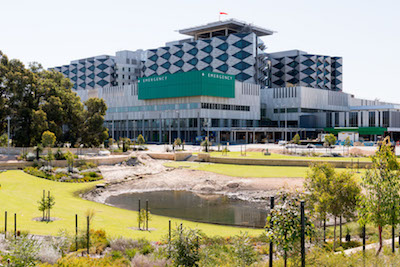
Perth's Fiona Stanley Hospital will add new results and orders modules to its BOSSnet electronic medical record, with Fremantle Hospital to follow suit having also chosen to deploy BOSSnet's eForms and scanning modules.
The results module will enable clinicians at all sites in the Fiona Stanley Fremantle Hospitals Group to access, review and sign off on all pathology and radiology results directly through their BOSSnet EMR, instead of having to toggle between different information systems.

The My Health Record has not been affected by an apparent data breach in the US involving the company that built it, IT services giant Accenture, the Australian Digital Health Agency says.
Fairfax is today reporting that Accenture left four cloud-based storage servers unsecured and potentially open to exposure, including dummy data from Caltex Australia. However, it has no evidence the My Health Record was involved.

The federal Department of Health has poured cold water on claims by the Pharmacy Guild that a trial of a shared electronic discharge medicines list is about to begin.
Pharmacy Guild executive director David Quilty wrote in his editorial in the guild's Forefront newsletter recently that the trial was part of the $50 million Pharmacy Trial Program and would involve the use of a shared electronic discharge medicines list which can be reconciled by the patient's community pharmacy in collaboration with their GP.
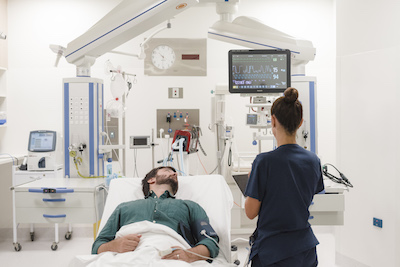
Macquarie University's Australian Institute of Health Innovation (AIHI) and a consortium of partner organisations have been awarded $2.5 million by the National Health and Medical Research Council (NHMRC) to set up a Centre for Research Excellence (CRE) in Digital Healthcare, which will undertake a number of programs including developing an automated IT critical incident database.
The CRE will be led by renowned health informatician Enrico Coiera, director of the Centre for Health Informatics at AIHI, and it brings together for the first time all the major Australian academic centres of health informatics research, including Bond University, the University of South Australia, the CSIRO Australian e-Health Research Centre, and the universities of Sydney, Melbourne and New South Wales.
It has also received the support of the Australian Digital Health Agency (ADHA) and the Australasian College of Health Informatics (ACHI), which will both work with the centre on a number of programs.

Sydney-based start-up E-Nome has signed a strategic alliance with the Garvan Institute of Medical Research to explore the application of its blockchain-enabled health record management platform to clinical trials and medical research.
The firm has also invested in fellow start-up Tyde, a registered portal operator for the My Health Record, and plans to use its technology to deliver MyHR content into the E-Nome platform with ambitious plans of having 50 per cent of Australians with a My Health Record also using the platform by 2020.
E-Nome, which is led by former Garvan Institute and St Vincent's & Mater Health director Nick Curtis and which recruited former St Vincent's Hospital CIO David Roffe in February, also plans to build APIs to link its platform to medical practice management systems and to launch its system to the public next September.

Mercy Health will roll out the Comrad radiology information system (RIS) solution at the Mercy Hospital for Women in Heidelberg, replacing the hospital's existing scheduling and billing systems.
The project will see the Comrad RIS fully integrated to Mercy’s iPM patient administration system, sonography information system and the hospital's clinical information system.

ACT Health has gone to tender for almost 250 new computer on wheels (COWs) to support electronic access to clinical information systems at the point of care such as electronic medications management, electronic pathology ordering and sample collection, and vital signs monitoring.
ACT Health currently uses a number of COWs along with various carts for vital signs monitors, venepuncture and pathology collection but wants to replace the carts with standardised COWs, including 157 slimline models that provide portable access to clinical systems as well as vital signs monitoring, and 89 stock COWs that can hold sufficient stock for ward round usage.
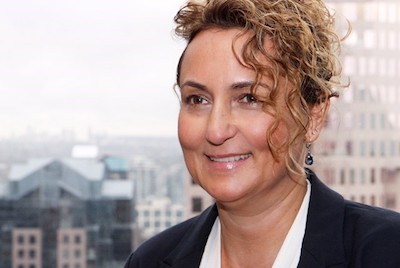
EMR vendor Allscripts has appointed former Deloitte staffer Gaylene Ray as vice president of professional services for Australia and New Zealand, with responsibility for the implementation and daily running of Allscripts' client projects in the region.
Ms Ray was a director of Deloitte's technology advisory practice, where she specialised in large-scale EMR implementations and led the planning, design, build, test and implementation phases for large EMR roll-outs in Australia, Canada and the US.

Best Practice Software has released version 514 of the medical and surgical specialist software it bought from Houston Medical in 2015, which has recently been rebranded to Bp VIP.net.
The Bundaberg-headquartered company is also in the final build stages for phase one of its Best Health patient engagement app, which is due for release in mid-2018, and has fixed a glitch in its Bp Allied product that was causing a few performance issues.

The federal government has gone live with a new one-stop website aimed at consumers looking for mental health information and resources such as free or low-cost apps, online support communities, online courses and phone services.
The government says Head to Health provides a place where people can access support and information before they reach a crisis, promising to add extra services such as a telephone support service to support website users and further support for health professionals to meet the needs of their patients.

Pulse+IT's weekly round-up of international health IT and eHealth news for the week ending October 8:
The digitized hospital of the future will include clinical command centers and interoperable EHRs
FierceHealthcare ~ Evan Sweeney ~ 05/10/2017
In 10 years, hospitals will be outfitted with a centralized clinical command center that collects real-time data, wearable sensors and yes, even interoperable medical record
Survey: majority of patients, healthcare pros have positive perception of EHRs
Healthcare Informatics ~ Heather Landl ~ 05/10/2017
On average, patients who received better instruction on accessing EHRs accessed them more than twice as frequently.

During my time working in tech support for a practice software developer following university, it became very apparent just how poorly understood basic computing technology was at the time. Early print editions of Pulse+IT spoke very much about these themes, with practical articles about scanners, monitors, printers, RAID and UPS all garnering lots of interest.
Eleven and a bit years later, computer hardware is rarely even talked about as an issue, with improvements to processing power, memory and storage capacity, and battery life having been so steady over the past decade that it is unlikely that your shiny new device is the limiting factor in your workflows.

The Wellington region is likely to have 22 general practices offering the Health Care Home model by April next year, in effect covering half the region's population.
The NZ model allows patients to request prescriptions, make appointments and message their doctor online, and to access their clinical information through a patient portal. They can also access telehealth services for urgent appointment requests and the practices offer extended hours.

The implementation of the Anthropometrics system throughout the five South Island district health boards has gathered pace since the in-house solution was rolled out last year, with 44,000 growth records now entered into the system.
Designed by Southern DHB solution architect Lance Elder and Dunedin School of Medicine professor of paediatrics Barry Taylor, the system is aimed at providing the benefits of a one-stop-shop for anything related to body measurements, available to acute care clinicians through the South Island's Health Connect South portal.
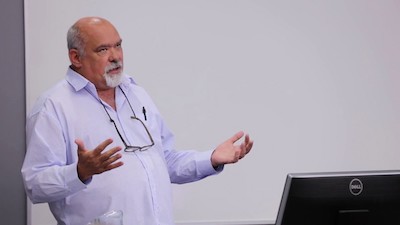
Waikato District Health Board chief executive Nigel Murray has resigned over an ongoing investigation into his expenses spending, with the DHB accepting his resignation on the proviso he repays all outstanding amounts.
Dr Murray has been on leave since mid-July, when an independent inquiry into his relocation costs from his previous job in Canada was launched.

The Australian Digital Health Agency (ADHA) is currently focusing its energies on a number of strategic themes in its 2017-18 work program as it prepares for the longer-term national digital health strategy to kick off next financial year, including the secure messaging interoperability project, one targeting medicines safety and moves to link the pathology and diagnostic imaging sectors to the My Health Record.
ADHA executive general manager for government and industry collaboration and adoption Bettina McMahon, who recently added the role of chief operating officer to her responsibilities, says the work program has been aligned with the four-year digital health strategy and will feed into aspects of it, with defined goals to be achieved in 2018 and real benefits to the healthcare system hoped to be realised by 2022.
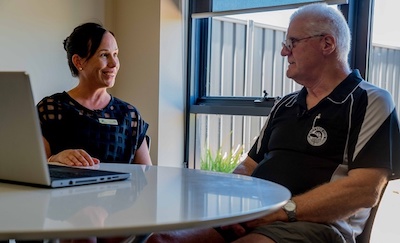
The Royal Flying Doctor Service (RFDS) Victoria plans to expand the telehealth program it established in January in partnership with Telstra Health to specialties including cardiology, respiratory medicine, psychiatry, rheumatology and gerontology following a successful roll out in the Kerang and surrounding regions back in January.
The service was piloted with diabetes patients who attend a local health centre for a remote video conference with an endocrinologist in Melbourne, with a diabetes nurse educator sitting in at the Kerang end.

Online appointment bookings and directory service HealthEngine has partnered with dental practice management consultancy firm Prime Practice to promote patient management services such as online bookings and new patient acquisition.
Health Engine says the relationship aims to help dental practices be more commercially successful at a time when an increasing number of dental practices look for more consumer-enabled ways to manage their services.
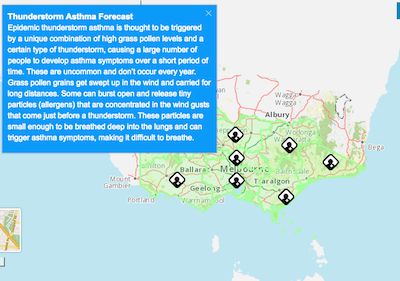
The Victorian government has launched a new thunderstorm asthma monitoring, prediction and alert system, marking the start of the grass pollen season.
The forecasting system will run from October 1 until the end of December and can be accessed through the Vic Emergency App or online at www.emergency.vic.gov.au/prepare.

Queensland Health is set to go to market in the near future for several components of its planned integrated Referral Management Solution (iRMS), which forms one element of the state's $361 million specialist outpatients strategy.
The strategy, released in September last year, is aimed at reducing wait lists for specialist appointments and includes recent moves to let GPs access their patients' hospital medical records through The Viewer.

Independent healthcare consulting firm HealthConsult will release a public consultation paper this week to restart the postponed conversation on the secondary use of data from the My Health Record system.
HealthConsult was appointed in August last year to develop a draft framework and implementation plan to facilitate the secondary use of de-identified data for research and policy purposes but a planned series of consultations was postponed due to the large number of other consultations taking place at the time, including for the national digital health strategy.
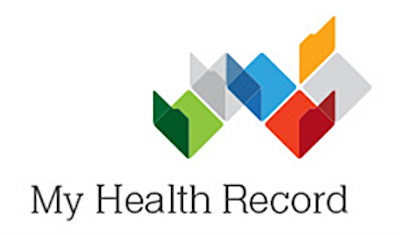
The Australian Digital Health Agency (ADHA) has called for expressions of interest in redesigning the My Health Record information website, with the redeveloped site due to go live at the end of January.
The site, at www.myhealthrecord.gov.au, will be hosted on the federal government's open source, Drupal-based content management system govCMS. Prior experience with govCMS is expected, the tender says.

Pulse+IT's weekly round-up of international health IT and eHealth news for the week ending October 1:
20 EHR vendors with the most hospitals implementations
Health Data Management ~ Staff writer ~ 28/09/2017
The Office of the National Coordinator for Health Information Technology annually gathers data on which vendors have certified technology used by providers that are participating in the Medicare EHR Incentive Program.
Cerner “lowered prices, rather a lot,” to get into GDE “game”
Digital Health News ~ Jon Hoeksma ~ 28/09/2017
One of the most experienced and highly regarded NHS CIOs has said Cerner significantly dropped its prices to win new business through the flagship Global Digital Exemplar programme.
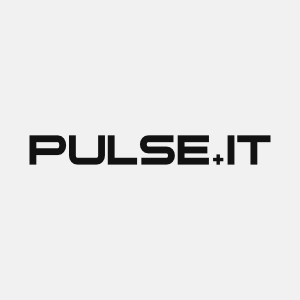
By far the most read story this week on Pulse+IT was the sudden resignation of NT Health CIO Stephen Moo, which has come hot on the heels of the similarly unexpected exit from the Victorian Department of Health and Human Services of its CIO, Andrew Saunders.
We first heard about Mr Moo's departure through an official email that was sent to us by a valuable source, but neither they nor we were prepared for the revelations in the NT News story that first broke the news on Monday.

NSW Health Pathology is working with eHealth NSW on adding cumulative results to the current pathology data now available to NSW clinicians through the statewide HealtheNet clinical portal, with plans to do some benefits analysis also on the cards.
Almost 120 hospitals from eight local health districts and the paediatric specialist network are now able to share pathology results through HealtheNet, which is also linked to the My Health Record, with the other seven LHDs due to integrate by the middle of next year.

The new $170 million hospital being built in the outer suburbs of Darwin is on track to open in July next year, the NT government says.
Palmerston Regional Hospital (PRH) is the first new hospital to be built in Darwin in more than 40 years and is scheduled to be equipped with the TrakCare clinical information system from InterSystems, which has been contracted to roll out an integrated clinical system for acute and primary care throughout the Territory.

The new Calvary Private Hospital has moved out of the two floors it used to inhabit and into its own facility adjacent to the Calvary Public Hospital in the Canberra suburb of Bruce.
The $77m facility features digitally integrated operating theatres that can accommodate day surgery and complex surgeries along with a maternity suite, critical care and a post anaesthetic unit.
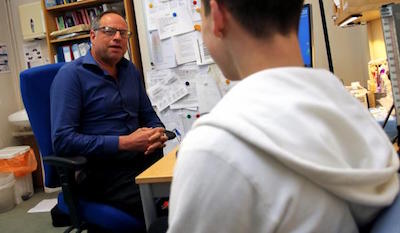
About 1000 Queensland GPs have registered to access their patients' hospital medical records through a portal into Queensland Health's The Viewer system since it went live in late June.
Part of Queensland's $361 million specialist outpatients strategy, designed to reduce waiting lists and improve information sharing between acute and primary care, the GP access to The Viewer (GPTV) project allows GPs to see a summary of their patients' diagnoses, test results and medications while they are being treated in hospital.

Patients using the federal government's after hours GP helpline can now have a summary of the advice they received sent to them by SMS or email, and have an event summary sent to their regular general practice and uploaded to their My Health Record.
The helpline is managed by the publicly funded Healthdirect Australia to provide consumers with access to a GP during the after hours period. It was originally set to be axed in 2015 before the government backed down and allowed it to continue operating outside metropolitan areas.

Melbourne-based medical start-up Nebula Health has gone live with a patient engagement platform that aims to improve patient understanding of their surgical procedure and to collect patient-reported outcome measures (PROMs) as a quality improvement exercise for clinics and surgeons.
Aimed initially at private clinics but being trialled in a public hospital respiratory department as well, the platform allows clinics to send patients an SMS with a link to a video of their own surgeon explaining their procedure, along with written information. Clinics can then provide regular updates on what the patient needs to do in the pre-operative period and schedule post-operative updates as well.

Australian-led research has shown that smartphone apps can significantly reduce people’s depressive symptoms and can be useful for managing the condition, but there is no evidence yet to suggest that using apps alone can outperform standard psychological therapies or reduce the need for medication.
Researchers from the National Institute of Complementary Medicine (NICM) at Western Sydney University, along with, Harvard Medical School, the University of Manchester and the Black Dog Institute conducted a meta-analysis of 18 randomised controlled trials, which examined a total of 22 different smartphone-delivered mental health interventions.
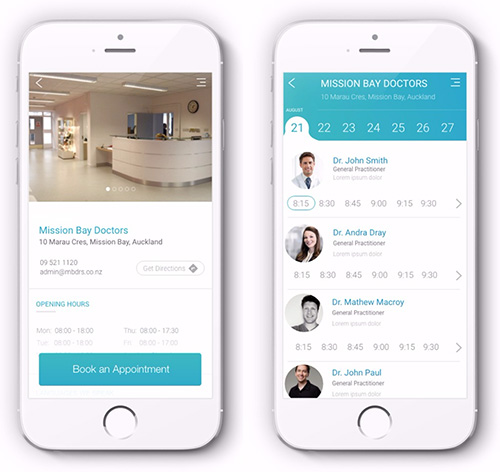
Three of New Zealand's top health IT companies have been named as finalists in the NZ Health IT (NZHIT) innovation awards, to be announced at the Health Informatics New Zealand (HiNZ) conference in Rotorua on November 5.
Christchurch firm Celo was founded in 2014 and counts the Canterbury District Health Board and Nurse Maude as customers. It markets encryption technology to provide secure and real-time mobile and desktop messaging for healthcare.

The long-term CIO of the Northern Territory Health Department Stephen Moo has resigned, with the NT News reporting that a referral has been made to the NT Police Special References Unit from the Department of Health.
Mr Moo has not been charged. An email sent by the NT's Department of Corporate and Information Services said he had resigned with effect from last Monday, September 18, and his position will be filled temporarily by NT Health finance head Ian Pollock while a recruitment process takes place.
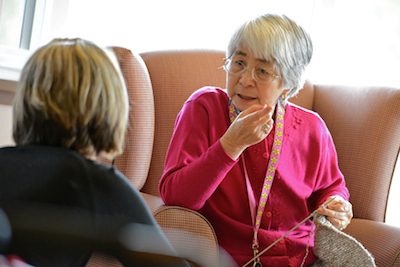
The federal government will look at how GP software may better interface with My Aged Care as part of a $20 million revamp of the system, recommended by independent reviewer David Tune in his recently released legislated review of aged care.
Doctor groups have long called for referrals to My Aged Care to be integrated into clinical software but at present they must be sent by post, fax or through a much criticised webform. Referrals may also be made by phone.

Pulse+IT's weekly round-up of international health IT and eHealth news for the week ending September 24:
Here's where hospitals are investing in innovation today
Healthcare IT News ~ Tom Sullivan ~ 21/09/2017
Seventy-five percent of hospital executives believe that digital innovation is important and, among those with 400 or more beds, the same percentage is gearing up to create an innovation center, if they have not already established one.
Nurses, physicians use personal devices even when BYOD is prohibited
Healthcare Informatics ~ Rajiv Leventhal ~ 21/09/2017
Some seven in 10 (71 percent) hospitals now allow BYOD (bring your own device) in the workplace, according to a new survey, which also found that some healthcare professionals use personal devices for work even when BYOD is not allowed.

We love it when we are perusing what are normally quite boring or opaque documents about health IT and we suddenly stumble across a hidden gem, like the mention in a recent tender for ACT Health that there were file types in a clinical information system that “frankly seem made up”, or in a Hansard transcript of the Senate inquiry into the Medicare number breach in which the RACGP's Rob Hosking used the infamous cone of silence from TV show Get Smart as a metaphor for making security so tight that nothing works anymore.
We couldn't make that hearing last Friday but the transcript makes for interesting reading and Computerworld covered it nicely in two stories, including a report on Dr Hosking's Maxwell Smartism. Reading the Hansard, we must admit we were a bit bemused by one witness who seemed to be recommending that because the My Health Record and the Department of Human Service's HPOS system can't be made 150 per cent secure they should be decommissioned and we should all carry our health information around on a smart card like they do in Germany.

eHealth NSW's big, ambitious electronic medications management program hit what could prove a tipping point this week when it began its go-live at Royal Prince Alfred Hospital, a 1000-bed giant in inner-city Sydney that is the largest of the 19 implementations so far.
First piloted at Concord Hospital along with Prince of Wales at Randwick, the Children's Hospital at Westmead and Maitland Hospital near Newcastle, the eMeds program encompasses two EMM systems – predominantly Cerner's EMM system, with Hunter New England LHD using DXC's MedChart – and is the largest, most complex implementation of EMM that Australia has ever seen.

An emerging expert in creating human-computer interfaces and his team will join the University of Auckland’s Bioengineering Institute as part of a new entrepreneurial universities program.
Sri Lankan-born Suranga Nanayakkara works on the development of wearable and sensory devices that can enable deaf people and the vision impaired to perceive and make sense of their environment.

Melbourne-based HMR Referrals has signed an agreement with publicly listed Jayex to promote its electronic referrals platform for home medicines reviews (HMRs) to medical clinics using Jayex's Appointuit online appointment management and patient engagement tools.
HMR Referrals, which launched in June last year and allows GPs to make an electronic referral for an HMR to an accredited pharmacist and receive a report back all within their clinical software, is currently being implemented in early adopter clinics in Queensland and is hoping to begin rolling out in NSW in the next couple of months.
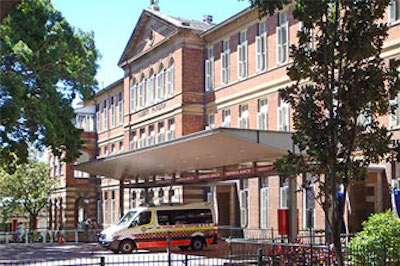
The largest implementation so far of eHealth NSW's massive electronic medications management program has gone live at Royal Prince Alfred (RPA) Hospital in Sydney.
Known as eMeds, the program will see electronic meds management implemented at 178 hospitals in the state, a vast expansion of the original scope of 28 hospitals thanks to a funding injection as part of the 2017 state budget.

The Cardihab remote cardiac rehabilitation platform and model of care developed by scientists from the CSIRO's Australian eHealth Research Centre (AEHRC) has been spun out as a standalone venture after raising $1.35 million in venture capital.
Cardihab is a smartphone app connected to a clinic-based portal that can be used for remote patient management following a cardiac event, with its model of care validated in a randomised control trial conducted by CSIRO and Prince Charles Hospital in Brisbane.

For a long time I have been concerned that the Australian Digital Health Agency (previously NEHTA) has been attempting to develop various solutions to a number of complex digital health problems which it does not seem to really understand, and as a consequence it is promoting an assortment of unsubstantiated ideas deficient in clarity, prudence and substance.
I read the recently released Digital Health Strategy and at the end of the 63 pages I asked myself: so what? What did I learn and expect to learn? How clear was I about where we were heading? About how and when we were going to get there? And would it make a difference?

South Australia's minister for police and emergency services Peter Malinauskas has been promoted to Health Minister, taking over from Jack Snelling, who announced yesterday that he was resigning from Cabinet and would not contest the next election.
Mr Malinauskas is also taking on the mental health portfolio from Leesa Vlahos, who also announced yesterday that she was resigning from Cabinet, although she will stay in Parliament.

Orion Health has signed a five-year contract with Singapore's Integrated Health Information Systems (IHiS) to roll out a healthcare enterprise service bus (ESB) powered by Orion's Rhapsody integration engine.
IHiS is the health technology agency for Singapore and manages a number of major projects, including helping public hospitals attain HIMSS certification, the implementation of closed loop medication management in hospitals and the Nursing Home IT Enablement Program (NHELP).

Pulse+IT's weekly round-up of international health IT and eHealth news for the week ending September 17:
Epic announces capability to let patients share their records
Health Data Management ~ Fred Bazzoli ~ 14/09/2017
Patients whose records are accessible through the portal offered through Epic electronic health records systems will be able to authorize any clinician to have a glimpse into their records, no matter what EHR system they’re using.
Survey: Healthcare execs see poor ROI from EHRs but optimistic about analytics
Healthcare Informatics ~ Heather Landl ~ 14/09/2017
The billions in taxpayer dollars spent on electronic health records (EHRs) since 2009 have unfortunately generated a poor return for the nation’s healthcare system, according to a survey of more than 1,100 healthcare professionals conducted by Salt Lake City-based data analytics vendor Health Catalyst.

In a bit of late breaking news today we hear that Auckland-based secure messaging provider HealthLink has been acquired by Irish firm Clanwilliam Group, which is building itself a nice little portfolio of medical software vendors serving parts of the world with reasonably similar primary care sectors, namely Ireland, the UK, New Zealand and Australia.
The Irish government has for over 20 years supported both the IT and the pharmaceutical industries with seriously valuable tax breaks in order to attract investment into the country, but it also seems to have encouraged a thriving local industry that is producing some quality health IT firms that are now not only exporting technology but are setting up shop down our way.

Irish health software firm Clanwilliam Group has taken a majority shareholding in Auckland's HealthLink, adding the market-leading secure messaging vendor in Australia and New Zealand to its growing portfolio of local companies.
Dublin-based Clanwilliam, part of the multi-national Eli Global private equity firm, bought NSW billing and practice management software vendor Medical Business Systems in February and then picked up Kiwi pharmacy software market leader Toniq in May.

DXC Technology has introduced a unified mobility solution for iOS and Android devices that can connect to multiple administrative and clinical systems for viewing patient data but also allows clinicians to order tests and medications, monitor results and engage with patients at the bedside.
Called Lorenzo ClinicalAide, the system uses a FHIR-powered application programming interface (API) layer that allows clinicians to connect to DXC systems such as the Lorenzo electronic medical record, iCM clinical manager, the WebPAS and iPM patient administration systems and MedChart for medications management but also to third-party systems and many legacy solutions.

The Victorian government is funding a trial of a two-layered security solution from Israeli company Bio-Nexus that it claims is the only physical cybersecurity solution protecting medical devices available on the market.
The $457,000 trial of the Cyber-Nexus device, to begin at the end of the year at Western Health, will see it attached to up to 400 pieces of medical equipment such as infusion pumps and vital signs monitors. According to a Channel 10 report, independent experts will then attempt to hack into the equipment to measure its capabilities.
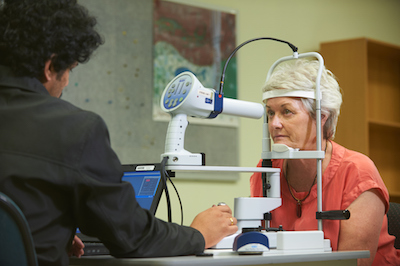
The availability of the CSIRO's low-cost retinal imaging technology Remote-I for use by GPs to screen for diabetic retinopathy (DR) is one step closer following the successful conclusion of a trial at a GP superclinic in Perth.
CSIRO has been conducting the trial with the GP Superclinic at Midland Railway Workshops in Perth since last November, screening 187 diabetic patients by taking high resolution images and analysing them with CSIRO's Dr Grader software.
The technology has been licensed to US telehealth firm TeleMedC, which plans to make it commercially available and install it in a further 20 practices in WA over the next few months, before expanding across Australia.

Respected business and IT strategy consultant and HISA member Paul Cooper has been named as acting director of digital health following the unexpected departure of Victorian Department of Health and Human Services' health sector CIO Andrew Saunders last week.
Dr Cooper, who has a PhD in science from the University of Melbourne through the Walter and Eliza Hall Institute of Medical Research (WEHI) and is an honorary associate professor at Deakin University, is also a Certified Health Informatician Australasia (CHIA).

Melbourne firm CNSDose is providing its technology to progressive US healthcare system Intermountain Healthcare to power an anti-depressant panel for Intermountain's new RxMatch personalised medicine platform.
Intermountain runs a precision genomics laboratory in its home state of Utah and will be offering the technology to its doctors. It will allow them to prescribe anti-depressants guided by a genomic profile of the individual patient.

The New Zealand Ministry of Health has extended the closing date for its request for information (RFI) on the planned national electronic health record (EHR).
Citing a number of requests and “considerable global market interest”, the closing date has been extended by a week to September 22.

Patient support program developer Sinapse is set to go live with a medicinal cannabis medicines portal (MCMP) next month that promises to provide a streamlined process for medicinal cannabis prescribing and dispensing between health professionals and manufacturers.
Developed as one of Sinapse's PharmaPrograms, the idea is to facilitate supply of medicinal cannabis via the Therapeutic Goods Administration's (TGA) Special Access Scheme (SAS) through registered pharmacies, as well as to assist prescribers to comply with regulatory requirements through step-by-step support.
PharmaPrograms systems architect Kos Sclavos said the MCMP will ensure that a greater number of health professionals will be able to work together to support patients and carers who require access to medicinal cannabis. Interested health professionals can register from today at mcmp.com.au.
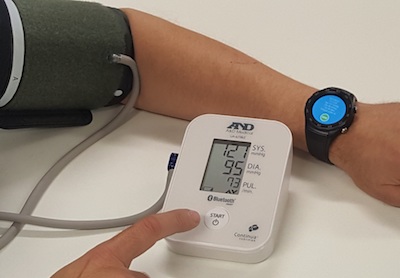
Sydney wearable device developer mCareWatch has teamed up with the world's second largest smartphone manufacturer to make the mCareWatch's elder care functionality available on Huawei's 4G SIM-enabled smartwatch, the Huawei Watch 2.
Released in Australia last month, the Huawei Watch 2 includes a number of built-in smart sensors for health and fitness and can also measure blood pressure and weight by connecting to Bluetooth peripheral devices.

Pulse+IT's weekly round-up of international health IT and eHealth news for the week ending September 10:
Experts say IBM Watson’s flaws are rooted in data collection and interoperability
FierceHealthcare ~ Evan Sweeney ~ 06/09/2017
Despite being backed by a significant budget and the marketing power of a major technology company, IBM Watson appears to be falling short of expectations when it comes to revolutionizing cancer care.
PrescribeIT ready for rollout in two provinces
Canadian Healthcare Technology ~ Staff writer ~ 06/09/2017
PrescribeIT, Canada’s national e-prescribing service, is about to launch in various communities in Ontario in the coming weeks, joined by Alberta in the fall.

US vendor Sunquest caused a few raised eyebrows this week when it was revealed that the Tucson firm had played a blinder and won the hotly contested tender for a new laboratory information system to replace Auslab for Pathology Queensland, the bill for which the Bananabenders estimate will cost a minimum of $50 million but is budgeted for up to the century mark.
While an established name in global LIS circles, from what we gather Sunquest has not had an installation in Australia before. The win follows the entry of fellow US firm SCC Soft Computer into the local market last year, with its $42 million contract to replace the Ultra system used by Pathwest in WA.

Research initiative Precision Driven Health is developing a smartphone-enabled electronic babies' and children's growth chart that is adapted for New Zealand's diverse population, in a bid to help tackle rates of childhood obesity.
Led by Gayl Humphrey, the joint lead for the health informatics and technology program at the University of Auckland's National Institute for Health Innovation (NIHI), the project aims to build a tool that gives parents an easy way of visualising the development of their child and what standard measurements mean.

US software vendor Sunquest has been named as the preferred supplier to replace the 30-year-old Auslab laboratory information system used by Pathology Queensland, but in an unusual move has been asked to build a prototype system for testing before a contract for a full roll-out is signed next year.
Queensland Health went to tender for the system in June last year, asking for a modern system that could handle forensic pathology and public and environmental health as well as the pathology needs of all public hospitals. The price tag is estimated to be between $50 million and $100 million.

ACT Health has issued tenders for a range of digital solutions to be installed at the University of Canberra Public Hospital (UCPH) when it opens next year, and has also launched a major data migration program to replace the territory's clinical records system with InfoMedix's Clinical Patient Folder digital medical record.
The digital solutions program will see electronic patient journey boards, patient room boards and an integrated queue management and electronic wayfinding system rolled out at UCPH, Canberra’s first purpose-built rehabilitation hospital and located on the university's campus at Bruce.
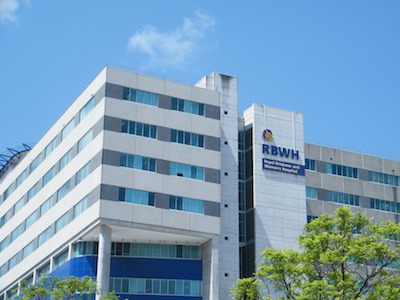
DXC Technology has won a $1 million tender to implement its MedChart electronic medications management (EMM) solution in two wards at Metro North Hospital and Health Service, part of the health service's four-year plan to digitise medications prescribing and management.
The HHS, which includes Queensland's largest hospital in Royal Brisbane and Women’s, along with The Prince Charles Hospital and smaller facilities at Caboolture, Redcliffe and Kilcoy, currently uses a paper-based medications system for the $100 million worth of medications it issues every year.

Nearly half of all general practices in New Zealand are now offering a patient portal but only 400,000 of the country's 4.7 million residents have taken up the technology.
It was initially hoped that the majority of practices would offer a portal by 2014 but that proved too ambitious. Numbers have grown in the last year however, with Health Minister Jonathan Coleman spruiking that 471 general practices out of the estimated 1000 in the country now offer one, up from 335 in June 2016.

South Western Sydney Primary Health Network (SWSPHN) has launched a pioneering interoperability project using Allscripts' dbMotion solution to extract patient data from GP desktop systems and share it in real time with local hospitals, and from discharge summaries uploaded to the My Health Record to present to GPs.
Dubbed Project iRAD, which stands for Integrated Realtime Active Data, the project will initially provide a minimum data set based on the NSW Agency for Clinical Innovation's (ACI) safe clinical handover resource (PDF), which is structured around the ISBAR (Identify, Situation, Background, Assessment and Recommendation) template and includes information that identifies the patient, outlines their diagnoses and reason for referral, and provides relevant medical history, test results, allergies and medications.

Lower North Island-region primary health organisation Compass Health is in negotiations with the developers of the Indici cloud-based practice management system to potentially roll the system out to its practices, replacing Medtech32.
While Compass Health could not comment as the negotiations are ongoing, it is understood the PHO will soon make a recommendation to its board to adopt Indici, which has been purpose-built by Irish vendor Valentia Technologies in association with Pinnacle Midlands Health Network.

No solution has been found for a tender issued by the NZ Ministry of Health for an oral health information system, which forms a key plank in plans for a national electronic oral health record (EOHR).
The Ministry went to tender last November for the solution, which needed to enable the clinical delivery of oral health services provided by district health boards but on a national scale.

The Victorian Department of Health and Human Services' chief information officer and the director of its digital health transformation program Andrew Saunders is stepping down this week.
Mr Saunders, who is also a member of the Australian Digital Health Agency's Jurisdictional Advisory Committee and the governing council of HIMSS Asia Pacific, was in the position for just over two years.

Health Language Analytics (HLA) is about to complete the first stage of a contract to use its natural language processing (NLP) technology, Horizon, to extract and codify cancer data from pathology text reports for the California Cancer Registry (CCR) in a project that CEO Jon Patrick says Australian cancer registries should follow to improve their cancer surveillance programs.
The Sydney-based firm is also using its scanning technology as a service with the NSW Cancer Registry to identify tumour streams in cancer records that have been faxed, using a mixture of optical character recognition (OCR) and a spelling correction engine to return performance figures of over 92 per cent.

The Australian Medical Association has highlighted the Medicare provider enquiry line as a bigger risk for fraudulently obtaining Medicare numbers than online systems such as HPOS as it warns against lumbering general practices with extra responsibility for security.
In a submission to the independent review of health provider access to Medicare card numbers, which was called following the revelation by The Guardian that Medicare numbers were for sale on the dark web, the AMA said the relatively small amount of Medicare numbers said to have been sold – it is apparently 75 in total – needed to be put into context against the 45,000 interactions per day by healthcare providers using HPOS.
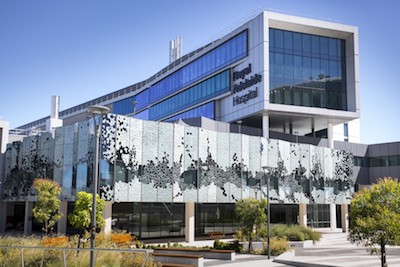
Canberra-headquartered Citadel Group has entered into an agreement to buy oncology software specialist Charm Health, adding the Brisbane firm to its healthcare division, which also includes the Auslab laboratory information system and the supply of a unified communications system for the new Royal Adelaide Hospital.
Charm Health's Charm software provides a single oncology electronic medical record with real-time access to patient information for multidisciplinary care teams across multiple locations. Charm has over 50 installations in Australia, along with a standing agreement with Healthscope hospitals and a recent agreement with private day hospital operator Icon Cancer Care.
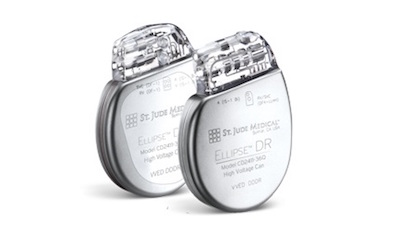
Pulse+IT's weekly round-up of international health IT and eHealth news for the week ending September 3:
FDA to patients with St. Jude pacemakers: Update needed to keep hackers out of devices
Healthcare IT News ~ Jessica Davis ~ 29/08/2017
The U.S. Food and Drug Administration is urging all heart transplant patients who have received a St. Jude pacemaker to contact their healthcare provider and receive a software update to protect their device from being hacked.
Tanzania launches world’s largest drone delivery network
eHealthNews South Africa ~ Sikhumbuzo Hlabangane ~ 31/08/2017
The Tanzanian government plans to launch the world’s largest drone delivery service to provide emergency on-demand access to life-saving medicines.

By far the most popular story on Pulse+IT this week was our report on a presentation by Semantic Consulting's Tim Blake at HIC last month on the guide to health apps he and his team have developed for Primary Health Tasmania, the TasVegas PHN.
Mr Blake and his team have put thousands of hours of work into curating the guide, which includes detail and reviews on a couple of hundred apps. While a searchable directory of health apps is a great resource, it can also be used by GPs to prescribe useful apps for patients, with the 'script' emailed with a single click and a note added to the medical record.

DXC Technology is planning to bring its Open Health Connect interoperability platform to the Australian and New Zealand markets, promising a platform approach to bringing data from legacy systems together through a data virtualisation layer and a FHIR-enabled API market place.
DXC, which resulted from the merger between CSC and Hewlett Packard Enterprise (HPE) Enterprise Services in March, first demonstrated the capabilities of the platform at the HIMSS conference in Florida in February and now plans to bring it to the local market.
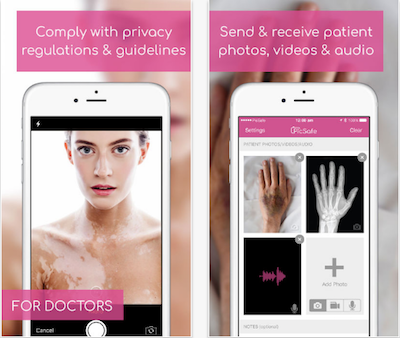
The co-founder of the secure clinical image sharing platform PicSafe Medi that ceased operations in 2015 has gone live with a new, free version of the app, which allows clinicians to send encrypted clinical photos taken on mobile phones as an attachment to an email.
Retaining the PicSafe name but minus the Medi, the system also has a paid version that individuals and healthcare organisations can use to send to the HIPAA-compliant Box or Dropbox, or to integrate into an organisation's electronic medical record.
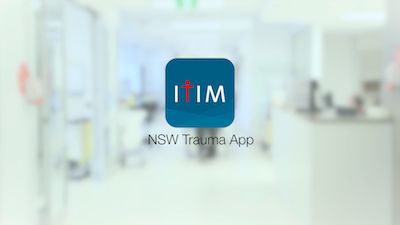

Telstra Health has completed a 12-month trial of its ReadyCare telemedicine service in rural and remote areas of Western Australia, which succeeded in identifying some gaps in service provision but still faced the challenge of lack of funding for telehealth in primary care provision.
The trial, which ran alongside the existing nurse triage and after-hours GP advice hotlines managed by Healthdirect, offered the extra capabilities of diagnosis and treatment through telephone and video conferencing along with the ability of its GPs to prescribe medications and refer patients to specialist services.

Fred IT has partnered with MedicalDirector to add its AusDI medicines information system to the app bar in Fred's cloud-based dispensing system Fred NXT.
Fred also offers similar single-click access to eMIMSCloud from within the app bar manager, allowing pharmacists to access their preferred medicines information product.

The former secretary of the federal Department of Health Martin Bowles has been appointed as national CEO of Calvary Health Care, following his announcement last week that he was retiring from the public service.
Mr Bowles will replace Mark Doran, who is retiring after holding the position for nine years. Mr Bowles will start on November 1.

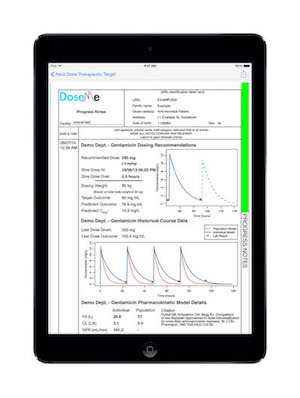
Queensland-based precision dosing software developer DoseMe has partnered with EMR giant Cerner to integrate its DoseMeRx real-time precision dosing software with the latest iteration of Cerner’s Millennium platform as a plug-in app using the new FHIR standard.
When accessed through Cerner, DoseMeRx can automatically extract clinical information such as age, weight, medications dose and previous response to drug therapy to allow clinicians to accurately calculate the most effective dose without any additional data entry.

Primary Health Tasmania is rolling out a new web-based, searchable directory of health apps to the 800 or so GPs in the state that will allow them to 'prescribe' digital health solutions for patients electronically.
With patients increasingly presenting to GPs armed with a variety of health apps of varying quality, the idea is not just to allow GPs to check on their relative worth or efficacy but to eventually prescribe an app or a bundle of digital health solutions as part of a care plan.
Developed by Sydney digital health consulting firm Semantic Consulting in association with Hobart software developer Healthcare Software on behalf of the Tasmanian PHN, the Digital Health Guide includes hundreds of apps along with information about each app's published evidence base, condition or disease target, pricing model, capabilities and the various ratings assigned by other healthcare providers and reviewers.

Pulse+IT's weekly round-up of international health IT and eHealth news for the week ending August 27:
Three years on from Cambridge’s Epic big bang go-live
Digital Health News ~ Laura Stevens ~ 23/08/2017
Few healthcare IT projects have generated quite as many headlines as the initially troubled deployment of Epic at Cambridge University Hospitals NHS Foundation Trust.
Scanadu cofounders' new project, doc.ai, is a conversational robot that explains lab results
MobiHealthNews ~ Jonah Comstock ~ 24/08/2017
Walter DeBrouwer, the Belgian inventor who founded Scanadu, the sometimes controversial personal medical scanner company, is coming out of stealth mode with his new venture: an AI-powered “robodoctor” (his words) called doc.ai.

It's reporting season for publicly listed companies in Australia and perusing the balance sheets always throws up some interesting stuff, like Telstra Health's $77 million write-down of goodwill on a couple of it assets and Primary Health Care's huge $587 million impairment from its medical centre business.
We don't often follow the fortunes of private hospital operator Healthscope but we had a look this week and discovered that just as it has exited the Australian pathology market, it has now removed itself from medical centres too, selling its 43 standalone practices to Singaporean outfit Fullerton Health. It still has its toe in the New Zealand pathology market through its ownership of Southern Community Laboratories though, with its new Wellington lab fully automated and digitised and pretty close to 100 per cent of pathology orders and results through this lab now electronic.

Telehealth service provider Homecare Medical has won the contract to act as the national coordination centre for New Zealand's national bowel screening program, which kicked off at Hutt Valley and Wairarapa district health boards last month.
The coordination centre’s responsibilities include managing the database and distribution of the invitations for the program, providing test kits to participants and ensuring that GPs receive their patient’s test results electronically. A tender for a long-term national IT solution for the program is expected to be released shortly.
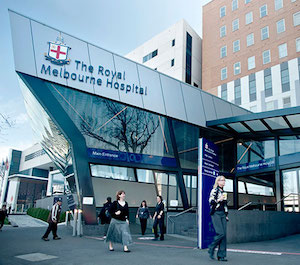
A multi-centre research study is currently underway to test whether an eHealth solution can be harnessed to improve initiation of treatment for people with hepatitis C by GPs and to improve communication between clinicians, with the hope of one day integrating the solution into hospital and GP electronic medical records.
Called the HealthELink project, the study is currently concentrating on high-risk groups such as prison populations in the Northern Territory and South Australia and is recruiting GPs in those jurisdictions. It is run by a team of gastroenterologists from Royal Adelaide, Royal Darwin and Royal Melbourne hospitals, with a software solution designed by Australian digital business agency DB Results.

Private hospital and pathology laboratory operator Healthscope has reported a decline in net profit of almost 40 per cent for the 2017 financial year, mainly due to a write-down from the sale of its 43-strong medical centre portfolio, but the company says it will continue to invest in infrastructure and technology.
The ASX-listed multinational's new CEO, former Telstra executive Gordon Ballantyne, highlighted the New Zealand pathology division as a bright spot with increased investment in technology leading to efficiency gains, but said the hospital division was suffering from soft market conditions.

The Health Informatics Society of Australia (HISA) has won its bid to host MedInfo, the World Congress on Medical and Health Informatics conference, in Sydney in 2021.
HISA last hosted the conference in Brisbane in 2007. Previously held every three years, it is now a biannual event, with the next conference being held in Lyon, France.

Best Practice Software has released version 5 of its allied health practice management software suite Bp Allied, featuring new functionality such as Medicare Online claiming and Tyro integration.
Bp Allied, which was formerly known as myPractice before its acquisition by Best Practice in September last year, has tailored modules for a range of allied health disciplines and also integrates with MYOB, MailChimp, Google Calendar and secure messaging services Argus, ReferralNet and Medical-Objects.

Auckland-based Orion Health has extended its 10-year partnership with US enterprise master patient index (EMPI) specialist NextGate, extending the offering to global markets.
NextGate has a suite of patient and organisation identity management products including EMPI, based on its MatchMetrix master identity platform, as well as provider and organisation registry solutions and an XDS registry for clinical document exchange.

The secretary of the federal Department of Health, Martin Bowles, has announced he will be retiring at the end of the month after a career in the public service spanning almost 40 years.
Previously a secretary of the department of immigration and a deputy secretary in the departments of climate change and defence, Mr Bowles was awarded the public service medal (PSM) in 2012 and joined DoH in October 2014.

The NZ Ministry of Health has released a request for information (RFI) from the market to help further develop its plans for a national electronic health record (EHR), which it hopes will be able to connect data across the digital health ecosystem, including provider and consumer-entered data.
The Ministry has settled on the title of the National Electronic Health Record Business Case for the project, which was first recommended as part of the country's health strategy roadmap of actions.
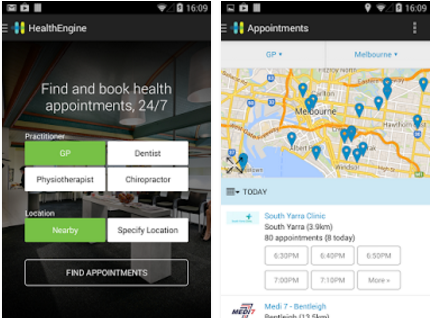
Telstra has announced a loss of $38 million in an overall $77m impairment reduction for its health business and a dilution of its ownership of online booking service Health Engine, but says it is looking at a long-term strategy for the division and expects it to become profitable.
Announcing its end-of-financial year results last week, the company said Telstra Health was now the largest health software and solutions vendor in Australia and had over 1000 people on staff.

Primary Health Care is gearing up for the roll out of MedicalDirector's Helix cloud-based practice management system to its medical centres later in the year, along with the new Visage radiology information system from Pro Medicus that it plans to roll out to Healthcare Imaging Services, the company's diagnostic imaging division.
Primary also plans to upgrade its pathology laboratory information system and its underlying infrastructure, and to begin the development of mobile applications and portals for its new Health & Co mixed billing medical centres business.
Copyright © 2025 Pulse IT Communications Pty Ltd. No content published on this website can be reproduced by any person for any reason without the prior written permission of the publisher. If your organisation is featured in a Pulse+IT article you can purchase the permission to reproduce the article here.
Website Design by Get Leads AU.